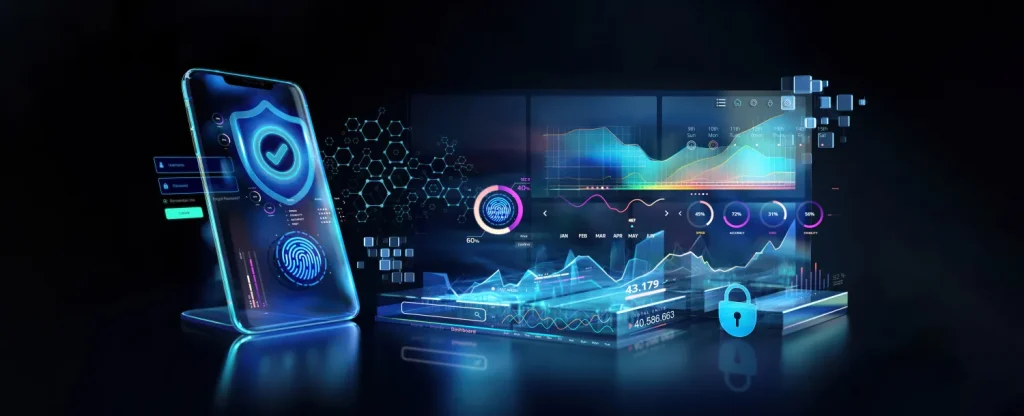Ransomware remains one of the most devastating threats in the field of cybersecurity. These malicious programs encrypt a victim’s files and systems, rendering data inaccessible, and then demand a ransom — usually in cryptocurrency — in exchange for the decryption key. The impact of such attacks can be massive: irreversible data loss, system paralysis, reputational damage, and in some cases, total shutdown of operations.
Targets range widely: companies of all sizes, hospitals, public institutions, schools, and even private individuals. Within hours, a well-coordinated attack can cripple an entire organization. Certain sectors — such as healthcare, logistics, and local government — have become prime targets due to their reliance on digital infrastructure and the sensitivity of the data they manage.
An Ever-Changing Landscape: Evolving Cybercriminal Strategies
In 2025, ransomware attacks continue to evolve despite growing global efforts to contain their spread. Cybercriminal groups are constantly developing new techniques to bypass security systems, quickly adapting to the latest defense mechanisms.
Among the most notable trends:
-
Double extortion: Attackers not only encrypt data but also exfiltrate it beforehand. Victims are then threatened with public disclosure or sale of their data on the dark web if they refuse to pay.
-
Triple extortion: Beyond encryption and data theft, some groups now also threaten the victim’s clients or partners, or launch DDoS (Distributed Denial of Service) attacks to increase pressure.
-
Ransomware-as-a-Service (RaaS): This growing business model allows technically unskilled individuals to rent ready-to-use ransomware tools on underground platforms. The ransomware developers take a cut of every successful attack, dramatically lowering the barrier to entry for cybercrime.
-
Supply chain and MSP attacks: Attackers increasingly target IT providers, MSPs (Managed Service Providers), and widely-used software to distribute ransomware at scale through trusted channels.
Spotlight on LockBit and International Takedown Operations
The LockBit group has established itself in recent years as one of the most prolific and dangerous ransomware collectives. Operating under a well-oiled RaaS model, LockBit has struck thousands of organizations worldwide, causing hundreds of millions of dollars in damages.
Their approach is ruthless: initial access via targeted phishing campaigns, exploitation of known vulnerabilities (such as ProxyShell or Log4Shell), privilege escalation, lateral movement across internal networks, and finally, mass ransomware deployment. Their ability to act swiftly and discreetly has kept them at the forefront of the cybercriminal scene.
However, coordinated international efforts have begun to yield results. In February 2024, Operation Cronos — a joint effort by Europol, the FBI, and other global agencies — dealt a serious blow to LockBit. Critical infrastructure was seized, several arrests were made across multiple countries, and decryption tools were made publicly available to help victims recover their data without paying a ransom.
While this marks significant progress, it is not the end of the story. LockBit quickly attempted to rebrand, and other opportunistic groups have emerged, copying their tools and tactics. This cat-and-mouse game between cybercriminals and law enforcement underscores the need for constant cyber resilience.
Defending Against Ransomware: A Vital Priority
Given the persistence of the ransomware threat, prevention is the best defense. Organizations must adopt a comprehensive cybersecurity strategy that combines technology, awareness, and preparedness:
-
Regular, isolated backups (offline or on secure cloud platforms)
-
Frequent system updates and timely security patches
-
Email filtering and continuous monitoring of network behavior
-
Network segmentation to limit lateral spread of infections
-
Employee training on cyber hygiene and phishing awareness
-
Incident response plans ready to deploy in case of an attack
The goal isn’t just to prevent an attack but also to reduce its impact and regain control as quickly as possible.
Conclusion
Ransomware isn’t going away any time soon. Its adaptability, the sophistication of available tools, and the profitability of extortion make it a persistent digital threat. Only a combination of international cooperation, robust technical defenses, and human vigilance will help turn the tide. In 2025, cybersecurity is no longer optional — it’s a collective responsibility.

